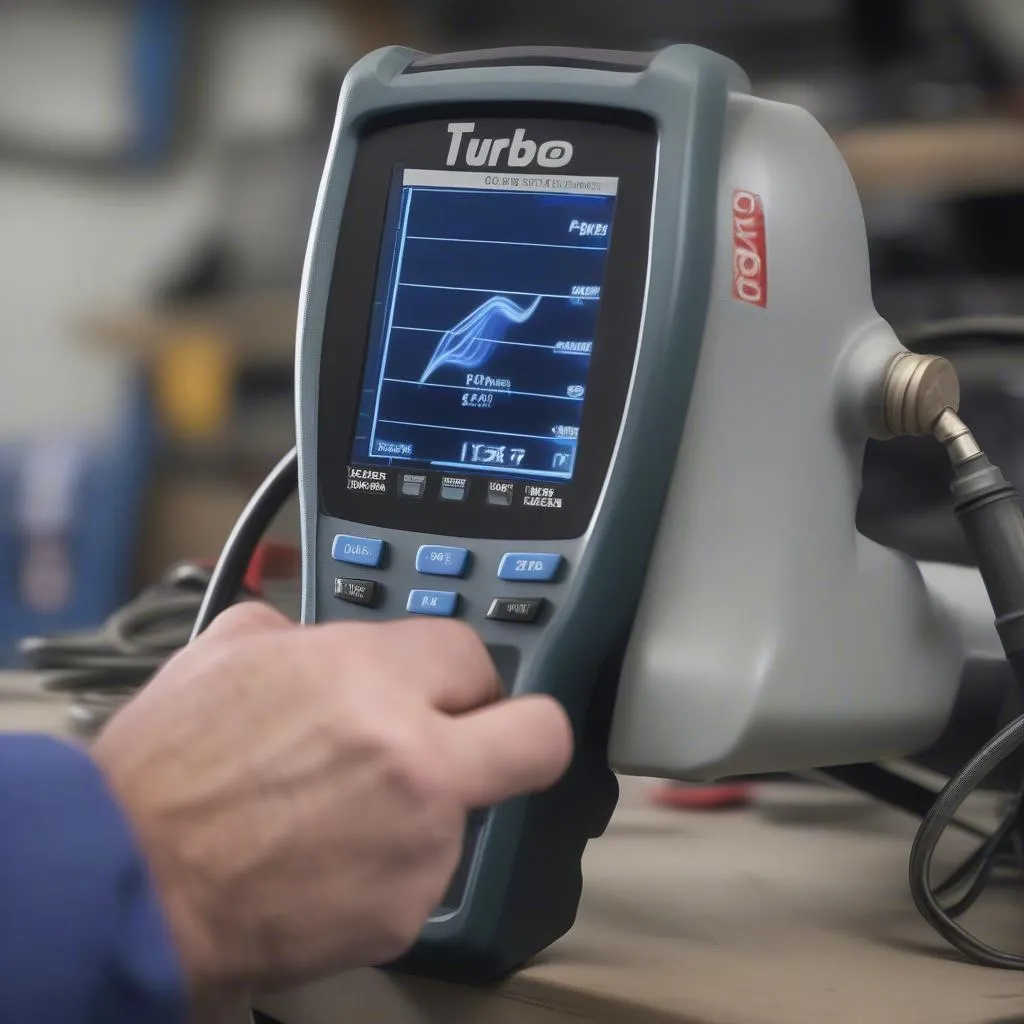Have you ever been working on your car, trying to diagnose a problem, and wondered if your scan tool could tell you the turbo pressure? It’s a common question, especially for those who are new to using scan tools. In this article, we’ll explore this question and delve into the world of automotive diagnostics.
Understanding the Importance of Turbo Pressure
The turbocharger plays a critical role in boosting the power output of your engine, especially in European cars. It’s responsible for forcing more air into the combustion chamber, which in turn increases the amount of fuel that can be burned and ultimately improves performance. Knowing the turbo pressure is essential for:
Why Turbo Pressure Matters for Mechanics
- Diagnosing performance issues: Low turbo pressure can signal a problem with the turbocharger itself, the intake system, or other related components. For instance, a faulty boost control solenoid can prevent the turbocharger from building up the necessary pressure.
- Troubleshooting engine problems: Many engine problems can be directly or indirectly linked to turbo pressure. For example, an issue with the boost pressure sensor can cause inaccurate readings, which in turn can trigger the engine management system to misfire or even go into limp mode.
- Optimizing performance: Adjusting boost pressure is a common way to improve engine performance, but it should be done with caution as it can potentially strain the engine if not done correctly.
Why Turbo Pressure Matters for Car Owners
- Understanding your car’s health: Knowing the turbo pressure can give you insights into the overall health of your car’s engine.
- Saving money on repairs: Catching problems early can prevent more serious and expensive repairs in the future.
- Improving driving experience: Optimizing turbo pressure can make your car more responsive and enjoyable to drive.
Can a Scan Tool Display Turbo Pressure?
The answer is yes, but not all scan tools can display turbo pressure. Here’s why:
- Different scan tools have different capabilities: Some basic scan tools can only read basic engine data like RPM, coolant temperature, and fuel trims, while more advanced ones, often referred to as “dealer-level” scan tools, are capable of accessing a much wider range of data, including turbo pressure.
- OBD2 Standards and Manufacturer Specifics: OBD2 (On-Board Diagnostics) is the standard for diagnostic communication in modern vehicles. However, the specific parameters that are available through OBD2 can vary between manufacturers. Some manufacturers, particularly European ones, have implemented their own proprietary protocols that require specific scan tools to access certain data, including turbo pressure.
- The Importance of Choosing the Right Tool: If you’re working on a European car, you’ll likely need a scan tool that’s compatible with the manufacturer’s specific protocols. For example, a scan tool like VCDS (Vag-Com) is specifically designed for Volkswagen, Audi, Skoda, and Seat vehicles.
How to Find Out if Your Scan Tool Displays Turbo Pressure
If you’re unsure if your scan tool can display turbo pressure, here’s how you can find out:
- Check the documentation: Refer to the user manual or the manufacturer’s website to see what parameters are available.
- Look for turbo-related data: Connect your scan tool to your car and navigate through the menus. Look for options like “Boost Pressure,” “Manifold Absolute Pressure (MAP),” or “Turbocharger Pressure.”
- Contact the manufacturer: If you’re still unsure, reach out to the scan tool manufacturer for support.
Frequently Asked Questions
What is the ideal turbo pressure for my car?
The ideal turbo pressure can vary based on your car’s model and year. You can consult your owner’s manual for specific details.
Is it possible to adjust turbo pressure with a scan tool?
Yes, but it’s important to have the right tools and expertise. Adjusting boost pressure can significantly impact your engine’s performance and longevity.
Can a scan tool diagnose problems with the turbocharger?
While a scan tool can provide valuable insights into turbocharger function, it’s not a definitive diagnosis. A thorough inspection of the turbocharger and associated components is often required to pinpoint the exact issue.
Are there any specific scan tools recommended for European cars?
Yes, many scan tools are designed specifically for European cars. Popular options include VCDS (Vag-Com) for VW, Audi, Skoda, and Seat; Autel Maxisys for various European brands; and Launch X431 for multi-brand coverage.
Where can I find resources to learn more about using a scan tool?
There are plenty of online resources, forums, and video tutorials that can guide you on using a scan tool. The manufacturer’s website is often a great starting point for detailed instructions and troubleshooting guides.
Conclusion
Understanding how to use a scan tool to monitor turbo pressure can be a valuable skill for any car owner. With the right tool and knowledge, you can gain insights into your car’s health, diagnose problems, and potentially even optimize performance. Remember, if you’re unsure about any of these steps, don’t hesitate to contact a qualified mechanic or a specialist in automotive diagnostics.
Still have questions? Our team of automotive experts is ready to help! Contact us via WhatsApp at +84767531508 for 24/7 support with diagnosing and repairing your European car.



